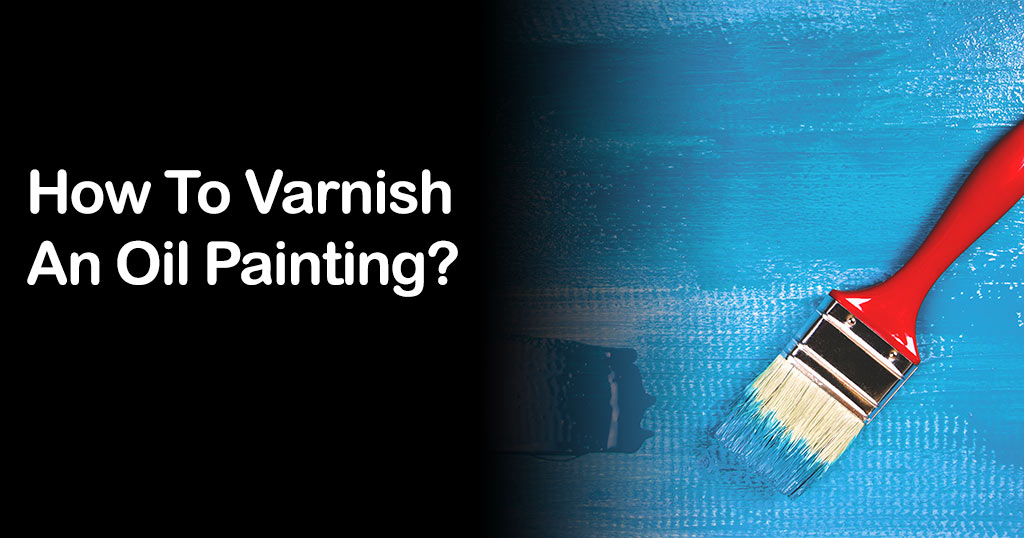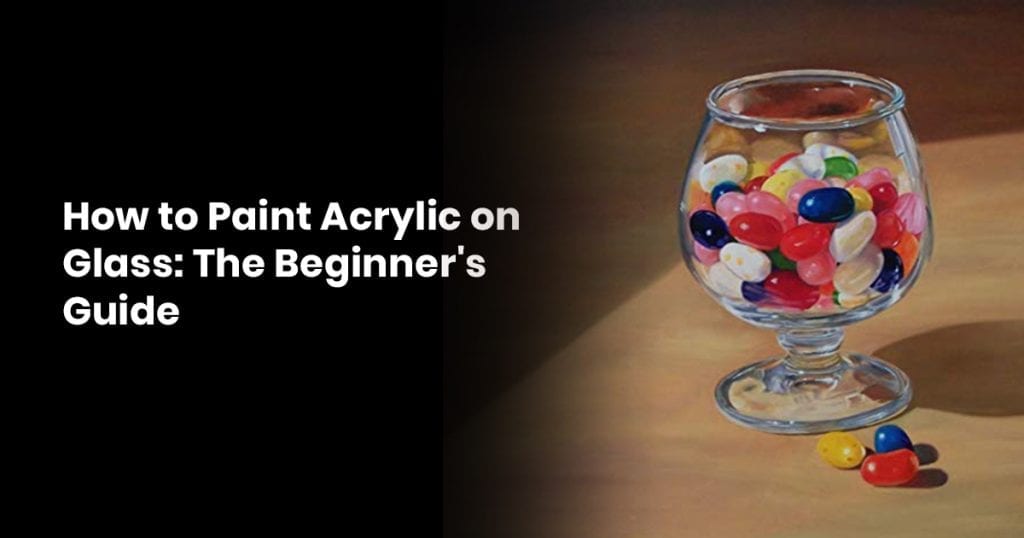Nothing is worse than spending hours or days to complete an oil painting, only to completely ruin it with a layer of varnish. You regret your decision as it looked much better before. This is overwhelming; however, it can be avoided!
Varnishing an oil painting is usually done as the final finish on specific paintings. It is not something that needs to be done, but it is an aesthetic option. This technique helps to improve the richness and vibrancy of your painting. It also provides protection to the surface of your artwork. The effect it has makes it easier to clean the canvas in the future.
Various varnishing techniques are used for multiple purposes. How you varnish an oil painting depends on textures, finishes, and the speed it takes to complete the work of art.
This process was originally performed to protect artist’s paintings from dust, dirt, and other particles in the atmosphere. People still use it for this purpose; however, it has also evolved into something far more technical. It can add a different dimension to your piece of work. In a nutshell, if you know how to varnish an oil painting, you are getting conservation, protection, and appealing aesthetics in one process.
When it comes to oil paintings, varnish serves a different purpose as it would to acrylic painting, for example. Let us take a look at everything you need to know concerning varnishing an oil painting.
Contents
Do You Need to Varnish an Oil Painting?
No, you do not need to varnish an oil painting. This statement is particularly true if you have followed the correct process with regards to oil painting. Varnishing may also be considered an excellent technique as it does not have to be permanent. When the aging effects start to show, you can remove this layer. The general rules or guidelines include:
- Slow-drying paint over quick-drying paint
- Fat over lean
- A well-made and well-primed support
Following this process ensures that you have a durable and stable film. Therefore, this means that varnish is not necessary.
However, individuals often use varnish because it offers protective and aesthetic qualities. Reasons why you should consider varnishing your oil painting are:
- It offers protection to the surface of your artwork.
- Varnish has the ability to change the surface to either a matte or gloss finish.
- It may increase the color saturation.
- Varnish provides a protective measure against UV radiation.
- It unifies the entire piece and creates a sense of co-ordination.
- Cleaning your painting is easier this way.
What Do You Use to Varnish an Oil Painting?
You can apply the various types of varnish in different ways. The primary methods include using a brush or applying spray varnish. What is the difference between the two, and how do you use the varnish?
Using a Brush to Apply Varnish to an Oil Painting
The first step is to ensure that the canvas is completely dry. To double-check this, you can put the canvas next to a radiator. The purpose of this is to avoid blooming.
Once the canvas is set, you can focus on the brush and its’ technique. This technique involves:
- Using a wide and clean brush – It is possible to purchase a varnish brush; however, this is not necessary. The most vital factor is to invest in a tool with a smooth touch that does not leave any brush marks. You want the brush to glide across the surface effortlessly.
- Pouring the varnish into a shallow dish – You have better control over the varnish on your brush if you do this.
- Work gently but quickly – Try to apply everything using even and long strokes. By doing this, you can cover the entire surface while gliding from side to side and top to bottom.
- Stroke your brush from side to side – It is better to work from left to right. Try to overlap every stroke so that there are no visible marks from the brush.
- Do not go over the same area multiple times – This could result in mixing dry resin with wet resin, which is going to have a cloudy finish over darker regions of the painting. If you miss any areas on the surface, wait for the first layer of varnish to completely dry before applying a second layer or any touch ups. It is also better to lay on more thin layers than one thick layer.
Additional tips include laying the canvas on a board before brushing on the varnish and covering the painting with a slightly larger board when the varnish process is complete.
Applying Spray Varnish
This method is not as popular as using a brush, but it can prove to be beneficial. The steps for applying this varnish include:
- Ensure that there is no moisture on the oil painting’s surface – Warm the painting’s surface. Never apply varnish in a cold or damp environment.
- Keep the spray varnish at room temperature – This has an impact on the outcome of the varnish.
- Use a lint-free cloth to wipe over the canvas’s surface – The rag and canvas need to be clean and dry.
- Position the painting vertically in a room with no dust – Many people overlook this step, but it is crucial. Why? It attracts less dust and reduces the chances of you having a heavy hand.
- Place the painting on a larger board – This avoids making a mess or causing damage to your surroundings.
- Shake, shake, shake! – As one would expect, a can requires a great deal of shaking. Make sure that you shake the can for the recommended period as this affects the varnish’s finish.
- Keep the spray can at the same distance throughout the process – An ideal length is approximately 15.75 inches. Take note of this as you may think you have a steady hand when you do not.
- Ensure that the nozzle has no blockages – It is normal for a spray varnish nozzle to get blocked. Regularly clean the nozzle and test spray it before spraying the actual canvas. You may have to repeat this step several times throughout the process.
- Keep shaking!
- One should spray from one edge to the other, and over this – It is essential to spray from before the canvas and to finish spraying after the canvas. This method ensures thorough and even coverage.
- Apply the varnish in thin layers. We recommend two or three coats. Spray varnish often dries quickly, within 10 minutes, so this process does not have to be long or tedious.
- Remember that you can apply as many layers as you want for the artistic effect.
Do You Have to Dilute Varnish?
Yes and no. This answer depends on the type of varnish you decide to use. One needs to dilute specific varnishes, especially if you are going to use a brush. You often do this so that you can create thin layers.
Other varnish types, such as a gloss varnish, can generally be directly applied onto the canvas. It is essential to read the instructions beforehand to ensure that you do not make any mistakes. Spray varnish does not require dilution as it is sprayed out of the can onto the canvas.
How Many Layers of Varnish Do You Need to Apply?
The more, the merrier! This is the case if you are looking for deeper and richer colors. It affects the level of sheen. Ultimately, the number of layers you apply depends on the type of finish you desire.
You have free reign here as long as you remember to let one coat dry before applying the next.
How Soon Can You Varnish an Oil Painting?
In general, you can start to varnish an oil painting as soon as it dries.
The application of varnish depends on the thickness of the painting. Essentially, if you work with thin layers, the paint dries quicker; hence, you can varnish quicker. If you are someone who likes to work with thick blobs of paint, you are going to have to wait longer to start varnishing.
The type of pigment you use also has an impact on how soon you can start varnishing. There are quick-drying and slow-drying pigments. Slow-drying pigments utilize a lot of oil in the paint’s binding process. This means that it takes longer to dry. If you want to varnish your painting soon after completing it, it is best to use quick-drying paints that have a lower oil content.
What Happens If I Varnish an Oil Painting Too Soon?
The worst-case scenario includes the coat of varnish cracking. This may sound awful; however, it may only be noticeable if you applied a thick layer of paint.
Another feature you might encounter is the oil not completely hardening. This factor means that the bond between the separate coats is not solid or strong.
While this may not destroy your painting, it is advisable to adhere to professional techniques if you want your oil paintings to last in the long run.
The Curing or Drying Process
An oil painting traditionally dries through oxidization. This process occurs when the oils in the artwork react with the oxygen from the air. Water is not involved in this process, as the painting does not have any water to evaporate.
The oil paints’ pigments are full of oil. You may dissolve these oils in a solvent. When the paint dries, the solvent evaporates. What does this mean? The oil and pigments are still present.
Oil does not evaporate. The oil people use, most commonly linseed oil, along with the pigments oxidize. They harden once they react with the oxygen. This reason is precisely why one should not apply varnish until the painting is completely dry. It does not allow the air to pass through.
When Is the Oil Painting Completely Cured or Dried?
This depends on the thickness of the painting. Thin pieces of work often dry within a few months. Thicker paintings on the other hand, often take anywhere between six months to two years. Waiting this long does not seem like a viable option; hence, the creation of synthetic varnishes. These products make it acceptable to varnish touch dry paintings.
One may need to utilize this method in case the oil painting is for a commission or exhibition.
That leads us to the next question. When is a painting’s surface touch dry? Thin applications may reach this point within one or two days, whereas thicker projects can take anywhere between 10 days to two weeks to get to this point. This process really does require a certain level of patience.
Do Oil Paintings Require an Isolation Coat?
No, they do not. Let us elaborate. You can apply the varnish directly to the oil painting once the paint is dry. You can do this because it is not challenging to remove varnish from the oil painting. The method you use to remove varnish are not harmful to the layer of oil paint.
The same cannot be said for acrylic paintings. They require isolation coats to protect the surface of the paint.
Does Varnish Even Out the Sheen of Your Painting?
Yes, if there are minimal variations between gloss and matte areas.
No, if there are significant, obvious, and larger areas with differing sheens. If this is the case, it is better to use the oiling out technique because the varnish is going to emphasize the differences.
Wax is generally added to a gloss varnish when an oil painting requires a matting agent. Various quantities are mixed to change the varnish’s sheen. Alternatively, you can attempt to put the wax directly on the painting. If you do this, you need to use a rag to buff the surface up. This method adds a touch of brightness to the completed piece of work.
Do not opt for a matte varnish when you want to brighten and bring out the colors in your painting. Matte varnish often produces a flatter and dull look to your work. We recommend this type of varnish when painting impressionistic or abstract designs.
Can I Use Linseed Oil as Varnish?
No, you cannot; however, you can use linseed oil to oil out the surface of your painting before applying a final layer of varnish. You can apply linseed oil with a clean and smooth rag or a soft brush. After this, you should remove most of the oil from the painting’s surface with a cloth or rag.
This process is done to restore the uneven sheen to the painting. It is not to be mistaken with varnishing; it is the process before the final varnish, which is known as oiling out.
The painting does not require oiling out if there is a minimal difference between the sheens. You can directly apply varnish to the surface when this is the case.
A Re-Touch Varnish After Oiling Out
A re-touch varnish serves various purposes. You can use it during the painting process as a temporary varnish for the picture. This restores color and adds sheen while still allowing the oil to completely dry.
Another beneficial factor regarding this is that you can paint on top of the varnish.
During the application process, the surface needs to be dry to your touch. The most efficient results occur when you use the product as a spray. This enables you to gently build up the layers. This is much more convenient than using a brush.
You have to pay more attention to this when using this as a final picture varnish. If you do this without oiling out the surface, glossy areas appear more glossy, and matte areas look slightly shinier. Hence, there is still a difference between the two styles.
Traditional Vs. Synthetic Oil Varnishes
Traditional natural varnishes include Copal, Mastic, Dammar, and Amber. Synthetic varnishes consist of Gamvar, MSA, and Alkyd Synthetic Resins.
Choosing a varnish does come down to personal preference and interest. The type of varnish you use depends on the kind of finish you are looking for.
Hard Varnishes
More specifically, Amber and Copal are also known as hard varnishes. They give off an enamel-like and intense glossy appearance. Additionally, they are gold in color. The downside of these options is that they are prone to turning yellow and cracking. These hard varnishes are also quite challenging to remove after extended periods as they are not very soluble.
If you want to use these, you may experience a slight difficulty. They are not easy to find as they are produced out of the sap of prehistoric trees and fossilized remains. Another complication is that they need to be dissolved in hot oil. This is not a straightforward process. People who truly value this approach may still be able to find these products if lucky as they are rare.
Soft Varnishes
Dammar and Mastic are commonly called soft varnishes. This is because they can easily dissolve in solvents. You can remove these materials from the surface of your oil painting without having an impact on the actual layers of paint.
The most commonly used varnish is Dammar. This is produced from the resin of a tree. It has a paler appearance than Copal but is admired for its’ viscosity. People consider the visual aesthetic and quality of this product quite luxurious.
One of the not-so-desirable traits of Dammar is that it develops a yellow tinge over time. There are also chances of your canvas cracking as the varnish does dry out and becomes brittle.
New Synthetic Types of Varnishes
Synthetic options are more advanced; hence, they offer more advantages than traditional types of varnishes. They often provide a clear coat that lasts for a long period. This means that you do not have to worry about the yellowing impact; hence, they are more flexible because you do not have to account for this.
What forms are they available in? There are two available forms, namely, aerosol or liquid. These are convenient and cost-effective. You are also free to choose between various sheens, such as gloss, matte, or satin. Another added bonus is that there is a relatively straightforward removal process as well. You do not have to concern yourself with the damage done to the layers of paint.
MSA varnishes are excellent for purposes of protection and elasticity. This is due to the fact that they contain a high molecular weight; however, they can only be applied to the canvas eight to 12 months after the painting takes place.
Are you looking for a colorless, glossy, and extremely resistant varnish? Alkyd Synthetic Resin is the ideal option for these results. Similarly to MSA, it can only be utilized eight to 12 months after painting.
Gamvar has been specifically produced so that it can be applied to touch dry paintings. It is available in either a two-part system or premixed. Likewise, it is not available in spray form, meaning you have to add it with a sponge or brush. A sponge is recommended because it provides a beautiful and smooth finish.
The Final Verdict
Applying varnish to an oil painting may seem like a daunting task; however, there is nothing to worry about if you apply the correct techniques and procedure. This process enables you to take your artistic journey even further by adding to the aesthetic and preserving your masterpiece.
Varnishing can seem quite confusing or pointless at times, but this is not the case when you know how to do it. There is no need to be afraid of using varnish or oil paint. Pick up the brush or can and create a piece of magic.




